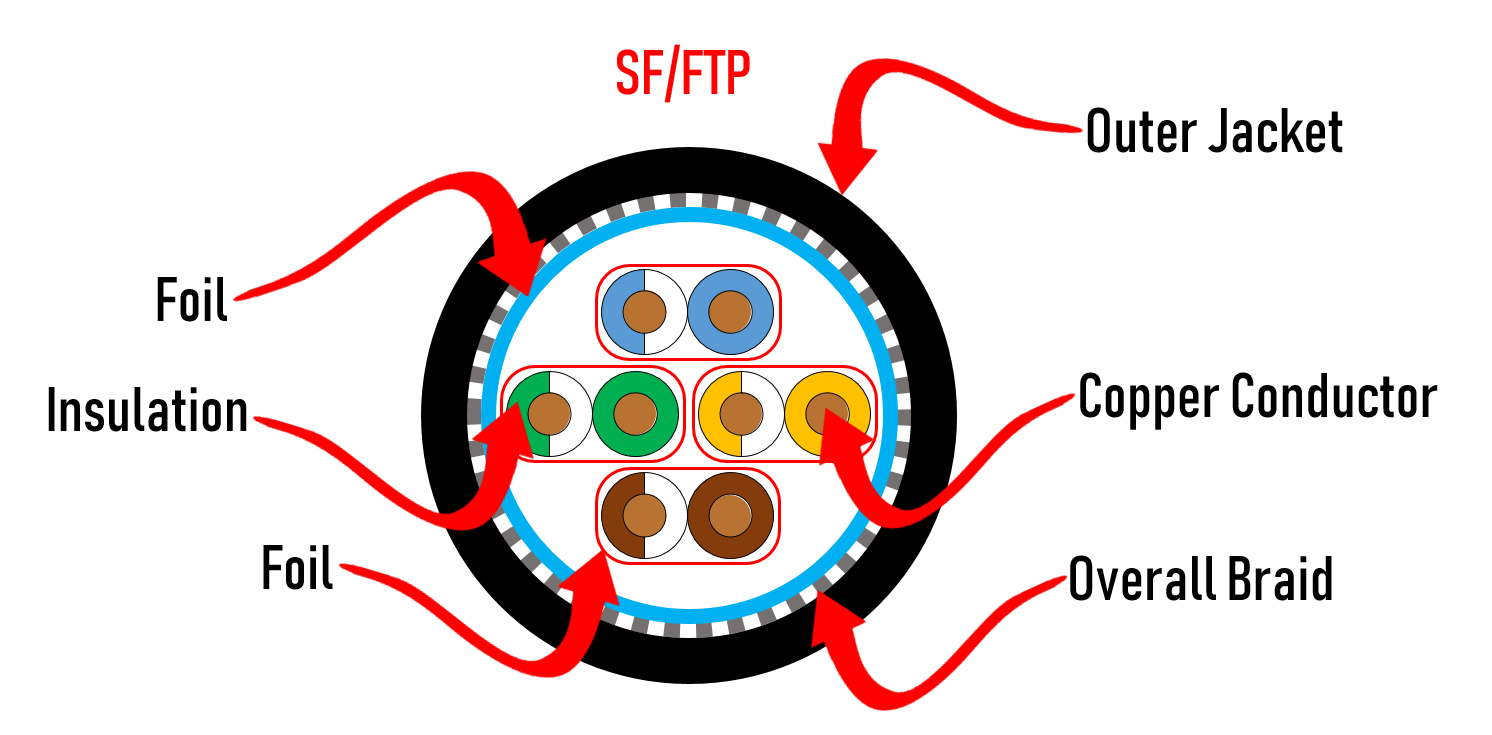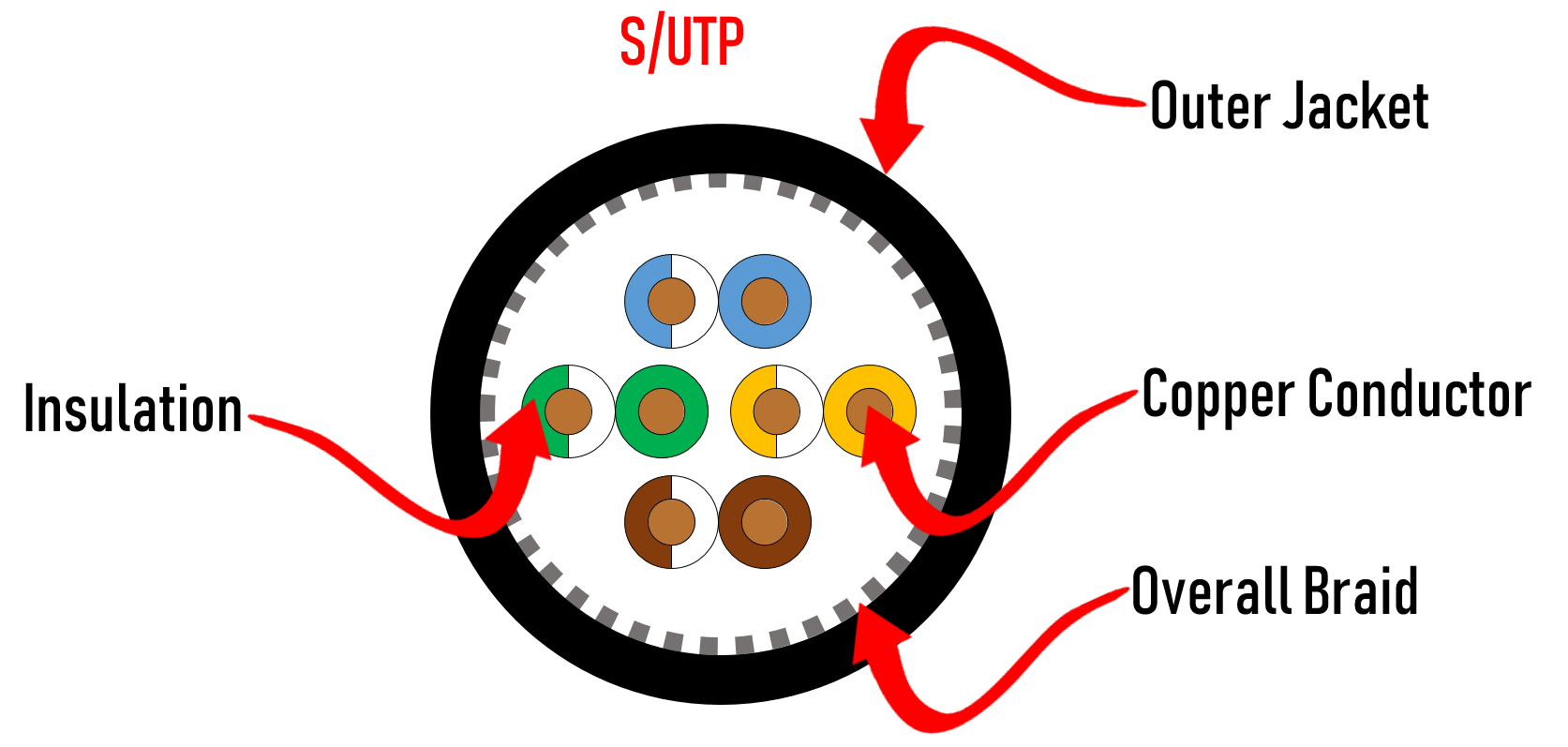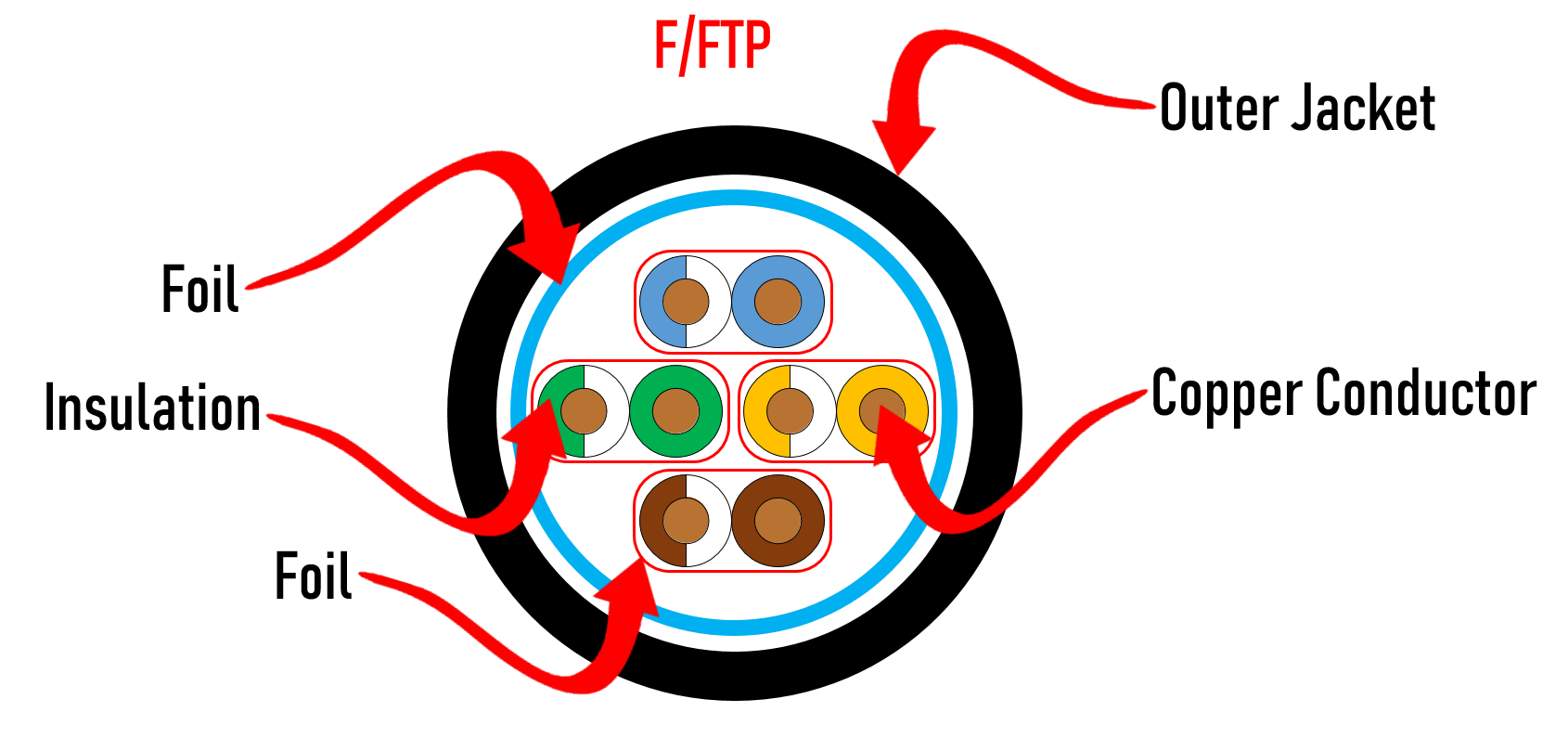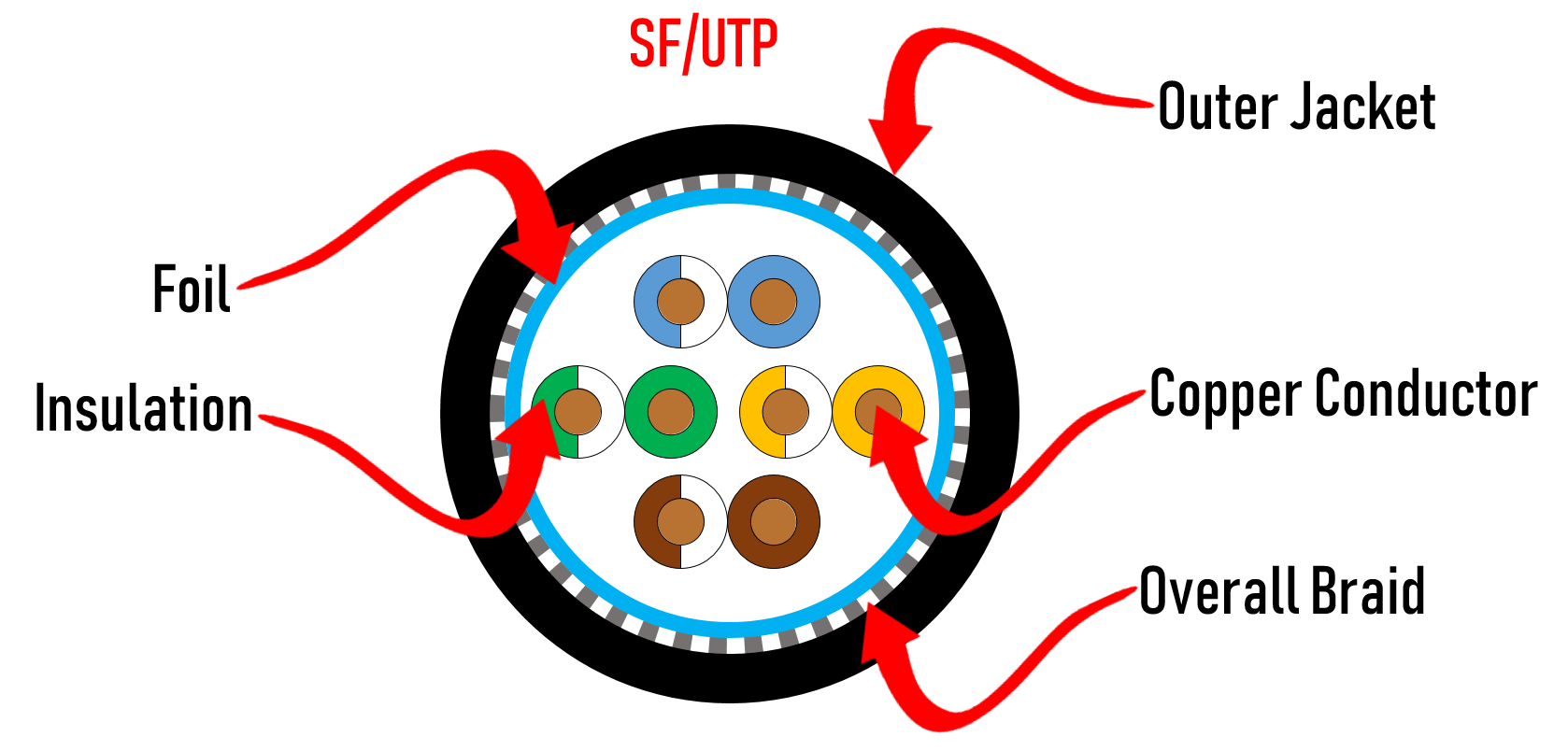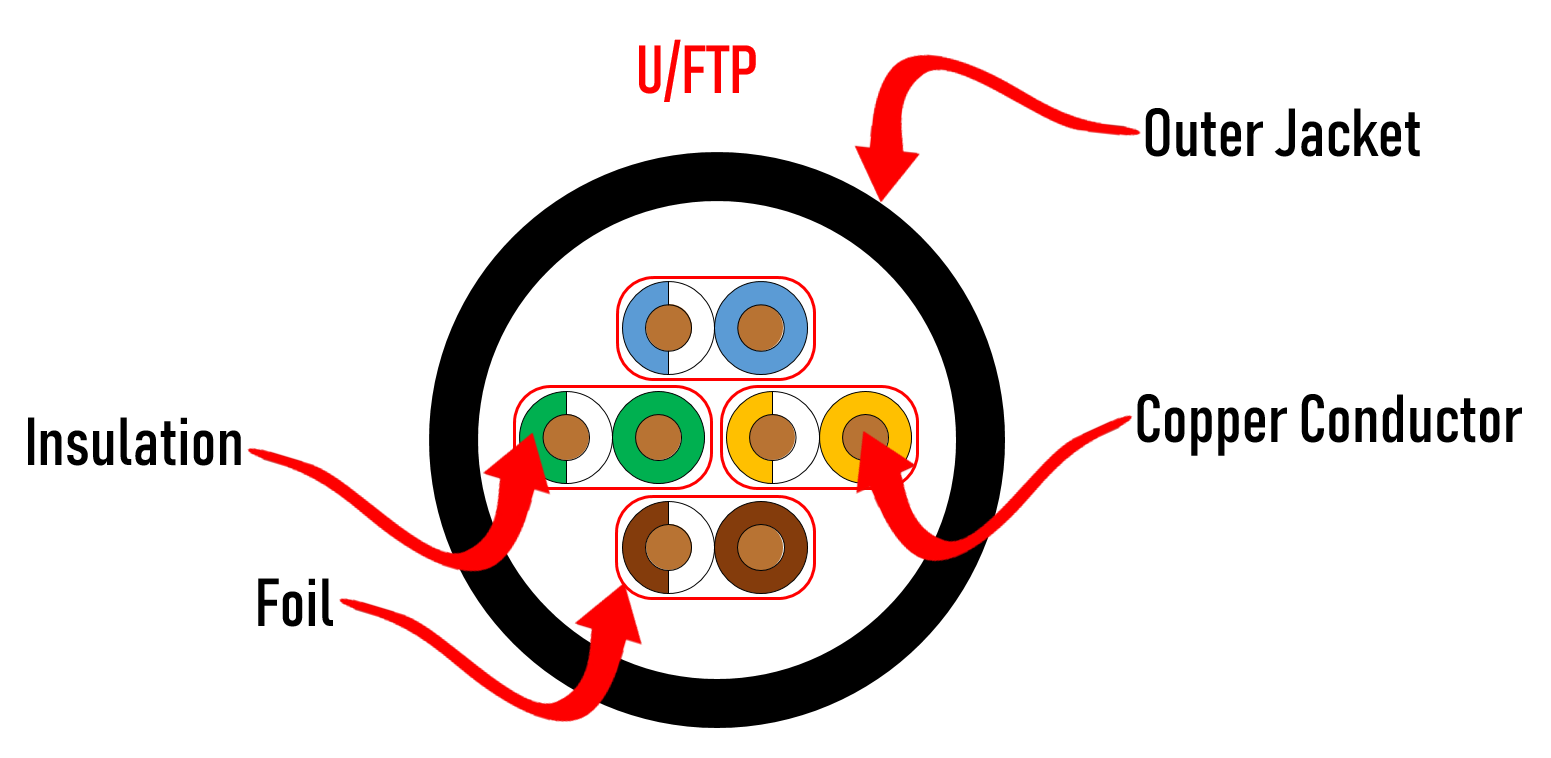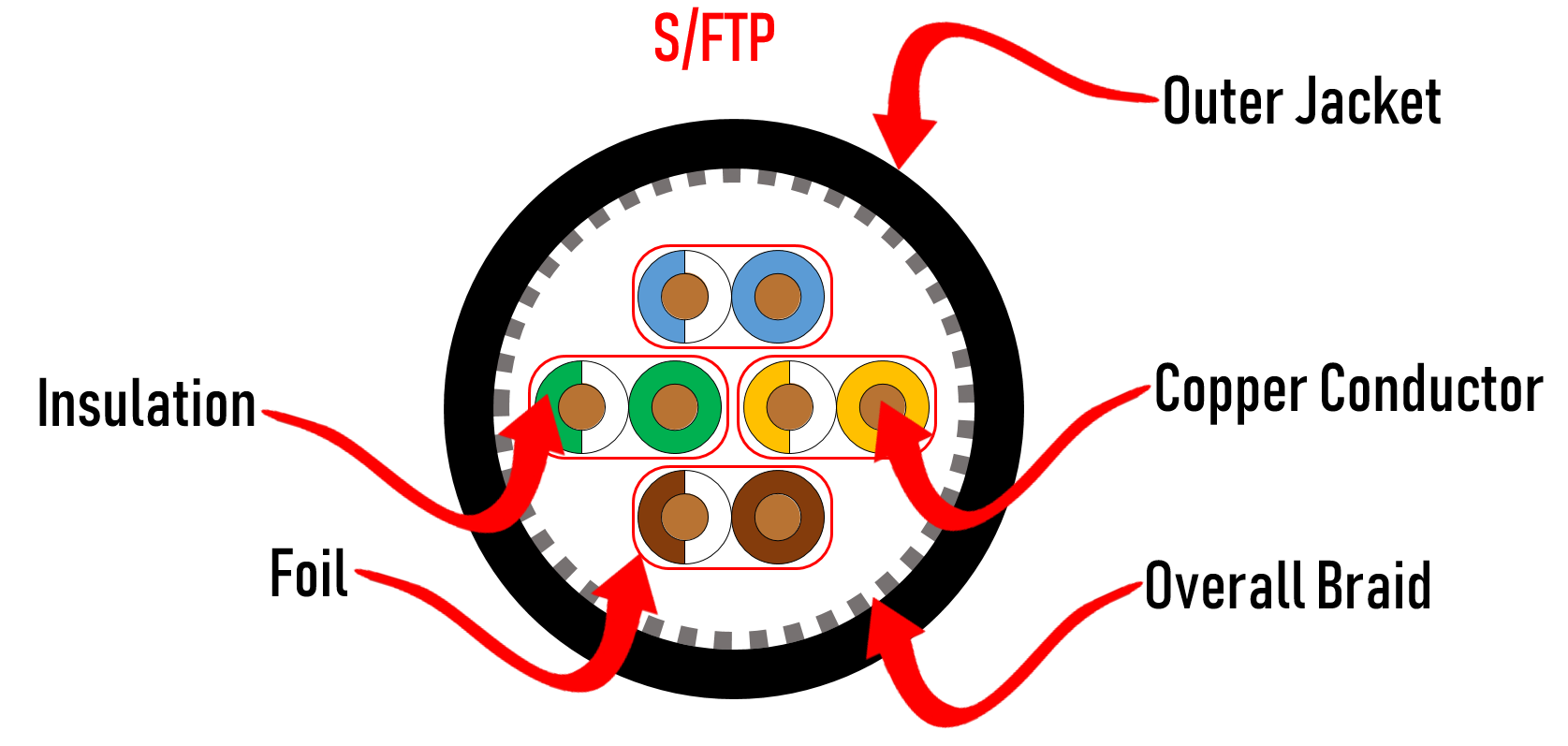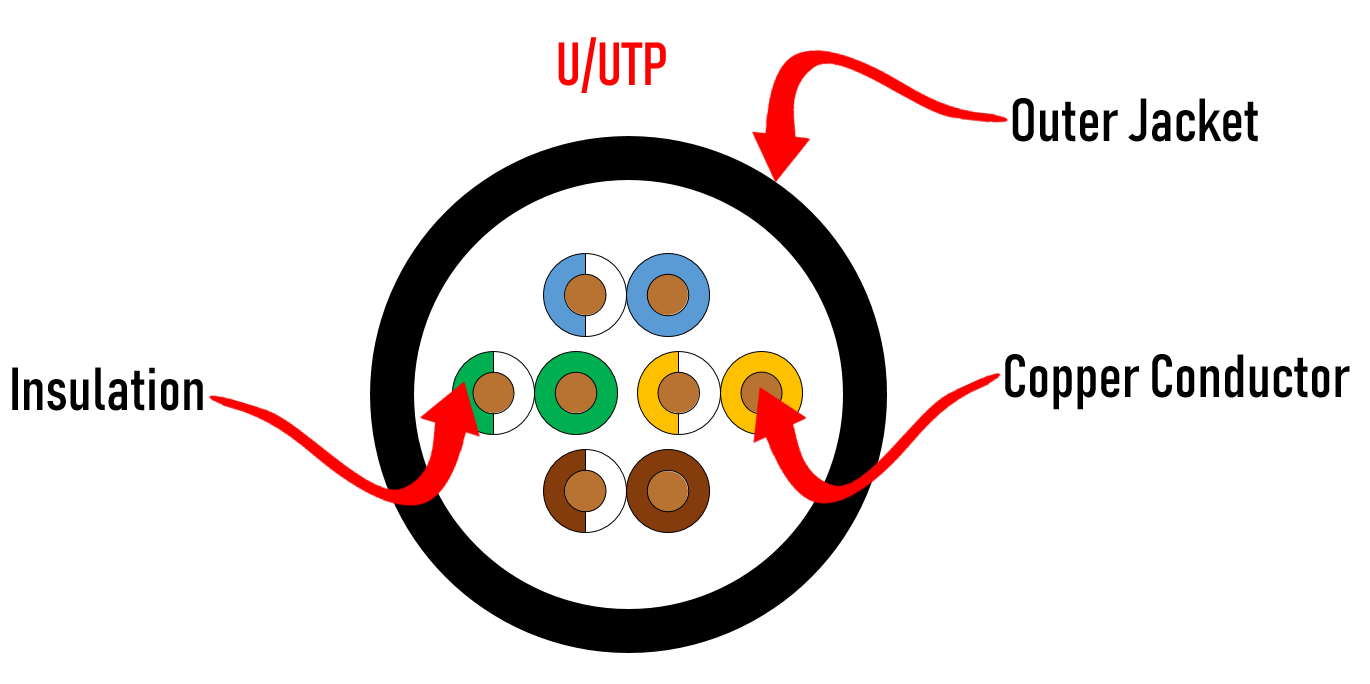Posted 27 January 2021
Screened Ethernet cables were designed for use in environments where electromagnetic interference (EMI) and radio frequency interference (RFI) are present. Examples include manufacturing, automation and Industrial control applications where motors, generators, transformers and other noise emitting industrial machines are in use or where you may be concerned about interference from other cables in the area.
What is a screen?
A screen is commonly made from aluminium or copper and is electrically conductive. The screen is often directly placed over the insulated cores or pairs inside the cable. The purpose of a screen is to reduce signal trying to escape from the cable while also preventing external electrical noise and interference from affecting the signal the cable is carrying.
We have put together a list of commonly used acronyms found within the industry for Cat 5E, Cat 6, Cat 6A, Cat 7 and Cat 7A cables in accordance with ISO/IEC 11801. This table will help you pick the right level of screening for your application.

*Careful what terminology you use
As you can see the industry terminology can be a bit misleading so it is best to use the ISO/IEC 11801 standard reference and check with your supplier they understand what you need.
The following images should help you decide on the correct screening for your application. If you need any help or a quote call the sales team on 01727 849 841.
The letter before the slash covers the shielding type for the cable, while the code after the slash determines the shielding for the individual pairs:
U = unshielded
F = foil shielding
S = braid shield (outer layer only)
TP = twisted pair
TQ = twisted pair, individual shielding in quads
U = unshielded
F = foil shielding
S = braid shield (outer layer only)
TP = twisted pair
TQ = twisted pair, individual shielding in quads







